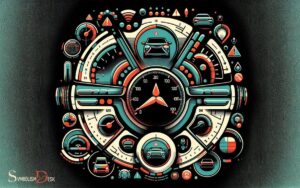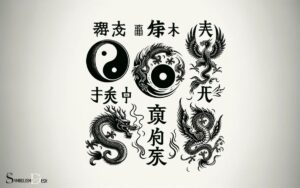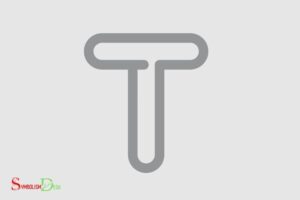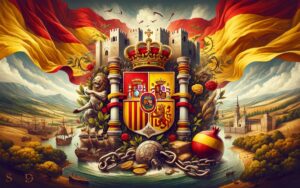What Does the Celtic Trinity Symbol Mean? Concepts!
The Celtic Trinity symbol, or Triquetra, signifies eternity and infinity. It symbolizes the unity of mind, body, and spirit, and the three life stages: youth, adulthood, and old age.
This design carries deep meanings across various cultures and traditions, emphasizing unity and life’s cyclical nature. It’s a powerful representation of the significance of the number three in global beliefs.
Key Takeaway
5 Symbols and Meaning of the Celtic Trinity
| Symbol | Meaning | Description |
|---|---|---|
| Celtic Trinity Knot | Trinity, Unity | The Celtic Trinity Knot, also known as a Triquetra, is a three-cornered knot representing the Holy Trinity – The Father, The Son, and The Holy Spirit. It is also used to symbolize elements that come in threes such as past, present, and future; mind, body, and spirit; life, death, and rebirth |
| Celtic Shield Knot | Protection, Divine Shield | This knot is a symbol of protection used by the ancient Celts. The design represents the four corners of the earth and is also interpreted as the protective shield of the Divine. |
| Dara Celtic Knot | Strength, Wisdom, Power | The Dara Knot is derived from the Irish word “doire” meaning “oak tree”. It symbolizes inner strength, wisdom, and power |
| Celtic Love Knot | Love, Friendship, Affection | This knot represents the love between two people. It is often used in jewellery designs and is a popular choice for wedding bands. |
| Celtic Sailor’s Knot | Long-Lasting Love, Faithfulness | The Sailor’s knot is a symbol of a strong and long-lasting love. It was often used by sailors to remind them of their loved ones while at sea. |
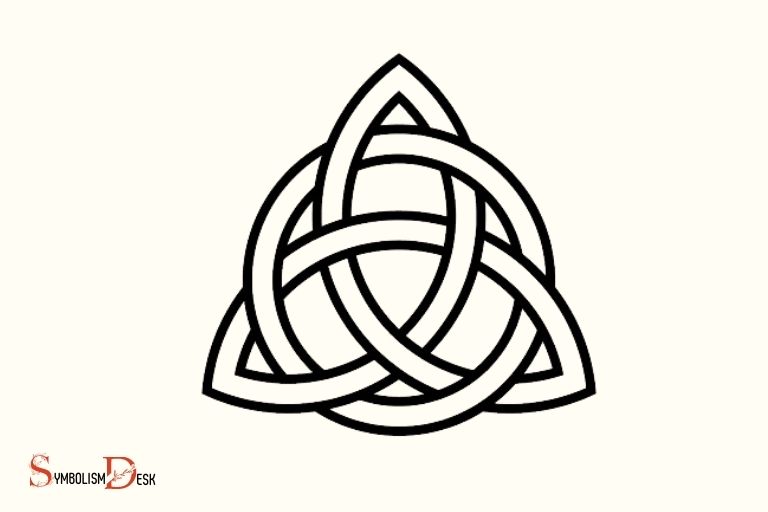
Decoding The Meaning Of Celtic Art
The celtic trinity symbol is a popular emblem in celtic art, found in various forms such as jewelry and tattoos.
Though it features three interconnected loops, the true meaning behind the symbol goes beyond aesthetic appeal.
The Origin Of The Celtic Trinity Symbol
The celtic culture flourished in ireland and the british isles during the iron age, from 600 bc to ad 400. The celts were skilled in metalwork and produced intricate designs.
The celtic trinity symbol, also known as the triquetra, is one of the most famous designs in celtic art, and it has extensive historical and cultural significance.
- The symbol is a representation of the holy trinity in christianity: The father, the son, and the holy spirit.
- The three interconnected loops suggest the interconnecting forces of life, death, and rebirth in the pagan celtic religion.
- Other interpretations suggest that it could represent three earthly elements: Land, sea, and sky.
Introduction To Celtic Art
The art style of the celts is known for its intricate and ornate design, particularly in metalworking.
Here are some key facts about celtic art:
- The celts used distinctive motifs in their work, including spirals, knotwork, and animal designs.
- Many celtic art pieces are characterized by the use of negative space, in which background areas are filled with an intricate pattern and the foreground is left empty.
- The art form was not limited to metalwork, and examples can also be found on stone carvings and manuscripts.
Understanding The Symbolic Meaning Of Art
Celtic art is loaded with symbolism, and each design element has a specific meaning.
Here are some examples:
- Spirals are one of the most commonly used motifs in celtic art and typically represent continuous cycles in life, such as birth, growth, and death.
- Knotwork patterns symbolize the interconnectedness of life and the concepts of eternity and infinity.
- Animal designs in celtic art were often chosen based on the symbolism associated with the animal. For instance, the raven, a common design element in celtic art, is thought to represent both death and rebirth.
Celtic art, including the Trinity symbol, carries more than aesthetic appeal; it bears profound significance deeply rooted in Celtic history and culture.
By understanding celtic art’s symbolism, one can gain insight into these ancient cultures’ beliefs and customs.
Examining The Trinity Knot
The Trinity knot, commonly known as the Celtic Trinity symbol, is often linked to the Christian Holy Trinity. It consists of three interlocking loops and holds significant importance in Celtic traditions and culture.
Understanding Triquetra: The Three Interlocking Loops
The celtic knot, also known as triquetra, can be found in celtic art, manuscripts, and jewelry. It is composed of three intertwined loops that don’t have a beginning or end, representing the unending cycle of life.
The three loops symbolize various interpretations, including the trinity nature of the goddess as maiden, mother, and crone, or the trinity of three earthly elements like land, sea, and sky.
Significance Of Triquetra In Celtic Religion
The triquetra symbol holds great significance in celtic religion. The three interlocking loops represent the three basic elements of nature-earth, water, and air- and also the mother goddess.
The symbol holds many interpretations, and based on what one believes, people use it for personal reasons, be it for physical, emotional or spiritual support.
Triquetra In Modern Culture
In modern times, the triquetra symbol has gained popularity as a decorative design for jewelry, clothing, and tattoos. Many people find the symbol appealing due to its intricate design and the deeper meanings each loop represents.
Apart from the religious aspect, people use triquetra for decorative purposes to help enhance the beauty of their homes.
The Celtic Trinity knot holds spiritual and non-spiritual meanings, maintaining its significance in contemporary cultures.
Whether you choose it as a personal statement of your faith or display it as a piece of decorative art, the symbolic power of the trinity knot will continue to be felt for years to come.
The Trinity Symbol In Paganism
The Celtic Trinity knot, or triquetra, is a captivating symbol with intricate designs and profound meanings. It has a rich history spanning centuries and holds a significant place in both Christian and Pagan cultures.
Celtic Pantheon And The Trinity Symbol
The celtic pantheon is one of the richest and most diverse mythologies in the world. The pantheon is made up of several gods and goddesses, each with their own unique characteristics and symbolism.
The trinity knot, with its three interlocking loops, was an important symbol that represented some of these gods and goddesses.
Here are a few key points to note:
- The three loops of the trinity knot symbolize the three divisions of the celtic pantheon, namely the land, sea, and sky.
- The symbol is also attributed to the three goddesses of the celts – maiden, mother, and crone.
- Celtic mythology associates the knot with the triple goddess brigid, who represents healing, poetry, and smithcraft.
Interpretation Of The Trinity Knot In Paganism
The trinity knot is a highly spiritual symbol for pagans, representing not only their beliefs but also their connection to nature.
- The three interlocking loops of the knot are believed to represent the three planes of existence- physical, mental, and spiritual.
The Trinity knot has ancient roots but is still relevant in modern Paganism, adapting with the faith’s evolution.
Significance Of The Trinity Symbol In Modern Pagan Cultures
While the Trinity knot is rooted in ancient traditions, it remains significant in modern Pagan cultures, evolving with the faith’s progression.
Here are its contemporary interpretations and relevancies in modern Paganism:
- The trinity knot symbolizes the balance between the human, nature, and the divine.
- Modern pagans associate it with the concept of maiden, mother, and crone, representing the three stages of a woman’s life.
- Today, people wear trinity knot jewelry as a way to honor their faith and as a symbol of their spiritual journey.
For centuries, the Celtic Trinity knot has captivated many with its beauty and intricate design, evolving into a cultural icon. Beyond its aesthetics, it stands as a symbol of love, faith, and spirituality, reflecting the values of its bearers.
The Trinity Symbol In Christianity
In Christianity, the Trinity represents the unity of three divine personas in one God: the Father, the Son, and the Holy Spirit. The Celtic Trinity symbol, or Triquetra, is a prominent symbol associated with this concept.
In this section, we’ll explore the significance of the trinity symbol in christian theology, as well as its symbolic interpretations in christian art.
Trinity Knot In Christianity
The Trinity knot, or Triquetra, symbolizes the Holy Trinity in Christianity, representing the Father, the Son, and the Holy Spirit through its three intertwined loops.
Beyond Christianity, the knot is recognized in various cultures and religions, denoting eternity, unity, and life’s cycle.
Significance Of The Trinity Symbol In Christian Theology
In Christian theology, the Trinity symbol represents the three personas of the singular God: the Father, the Son, and the Holy Spirit.
Though the Trinity concept can be complex, the symbol aids in visualization and understanding. These three are united in divine essence, epitomizing God’s love and unity.
Symbolic Interpretations Of The Trinity Knot In Christian Art
The trinity knot is a popular motif in christian art, and its symbolism is often interpreted in different ways.
Here are some of the common symbolic meanings attributed to the knot in christian art:
- The interlocking loops of the knot represent the interconnectedness of the father, the son, and the holy spirit.
- The knot’s three points symbolize the three persons of the trinity.
- The knot’s unbroken and continuous design represents the eternal and never-ending nature of god’s love and presence.
- The knot’s symmetry and balance represent the harmonious relationship between the three persons of the trinity.
The Trinity symbol, especially its knot design, holds profound meaning in Christianity. Representing the Holy Trinity, it offers Christians a visual aid to grasp this core belief.
Moreover, its symbolic interpretations in christian art provide a window to the interconnectedness and unending nature of god’s love and presence.
The Use Of The Trinity Symbol In Modern Times
The Celtic Trinity, or Triquetra, dates back to ancient times. Its three intertwined loops are interpreted differently across cultures, but commonly symbolize the power of three, trinity unity, and the life-death-rebirth cycle.
In modern times, the trinity symbol has become increasingly popular, especially in jewelry designs, tattoo designs, and other art forms.
Trinity Symbol In Jewelry Designs
The trinity symbol has become increasingly popular in modern jewelry designs. Jewelry designers frequently feature the triquetra symbol in their pieces, often mixing it with other symbols and gemstones.
The most popular jewelry designs that feature the trinity symbol include:
- Necklaces
- Bracelets
- Rings
- Earrings
Popularity Of Trinity Symbol In Modern Tattoo Designs
Recently, the Trinity symbol has surged in tattoo popularity. Many choose it for its representations of faith and protection. It’s frequently combined with other designs like hearts, crosses, and Celtic knots in tattoos.
Some of the most common trinity symbol tattoos include:
- Small and delicate designs on the wrist or ankle
- Larger designs on the back or chest
- Simplistic designs on the neck or forearm
Trinity tattoos are visually appealing and hold deep symbolic meaning. They are ideal for people who want to celebrate their faith or belief in the power of three.
Other Applications Of The Trinity Symbol In Modern Art
Apart from jewelry and tattoo designs, the trinity symbol has also found various applications in modern art.
It can be found in:
- Wall art
- Sculptures
- Home decor items
- Clothing and textiles
- Stationery items
The Trinity symbol, with its rich symbolism and design, is favored by those valuing its message of unity and the power of three. Its significance spans cultures and remains prevalent today, seen in jewelry, tattoos, and various art forms, highlighting its continued cultural relevance.
Its timeless beauty and symbolism make it a must-have for all those who believe in the power of three.
The Cultural Importance Of The Celtic Trinity Symbol
The Celtic Trinity or Triquetra symbol represents the unity of three elements. While Christians often see it as symbolizing the Father, Son, and Holy Spirit, it holds broader cultural and spiritual meanings. Let’s explore its significance and continued relevance today.
Preservation Of Celtic Art And Symbolism
Celtic art features interlacing patterns and symmetry, with the Trinity symbol as a key motif. This design, prevalent for centuries, embodies the Celts’ appreciation for life’s interconnectivity.
Cross-Cultural Significance Of The Trinity Symbol
The Trinity symbol, while prominent in Celtic culture, is also significant in other cultures. In Hinduism, a similar symbol is known as “Aum” and represents the sound of the universe’s creation.
In buddhism, the symbol represents the three jewels – buddha, dharma, and sangha.
The Trinity symbol’s appeal spans cultures and has made its way into pop culture, like in the TV show “Charmed”.
Importance Of The Celtic Trinity Symbol In Today’S Society
The Celtic Trinity symbol, beyond its religious and cultural roots, symbolizes unity and strength in modern settings like weddings and tattoos.
Its significance today lies in representing balance and harmony, serving as a reminder for cohesion in life. Its enduring presence and rich symbolism highlight its universal, unifying values.
Conclusion
As we come to the end of our journey exploring the celtic trinity symbol, we now understand its rich history and profound meaning. From its origins steeped in pagan beliefs to its adaptation by christianity, the symbol has a timeless and universal appeal. Its intricate loops and interwoven design reflect the interconnectedness of life, nature, and spirituality. Moreover, when paired with the symbolic meaning of the Celtic cross, it serves as a reminder of the harmony between earthly and divine realms. This enduring emblem continues to inspire people across cultures, bridging past and present with its depth and beauty.
We have learned that the three interlocking loops represent a unity of three distinct elements: the father, son, and holy spirit; the mind, body, and spirit; or any other trinity of importance to an individual.
Each element is unique in its own right, but together they create a powerful force that is greater than the sum of their parts.

